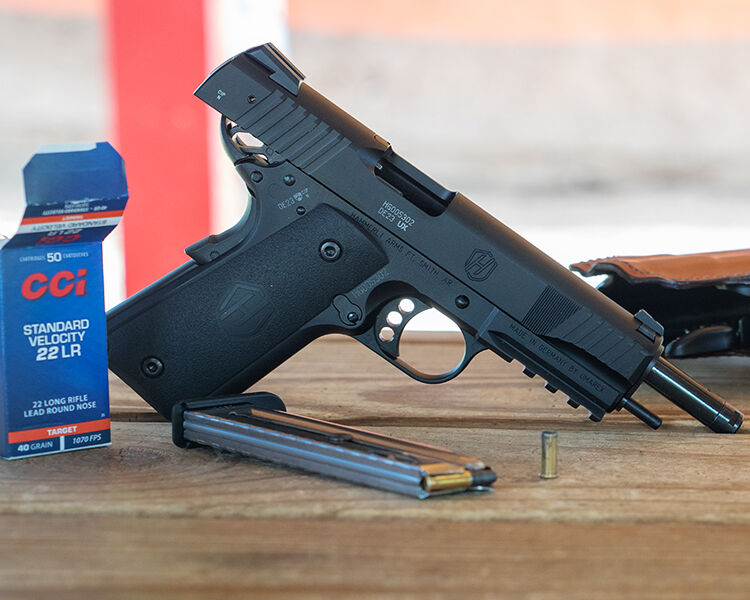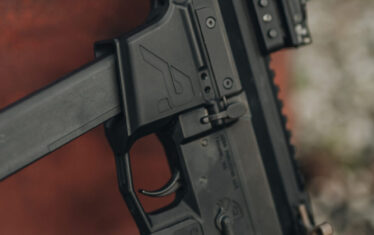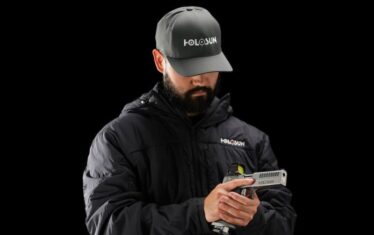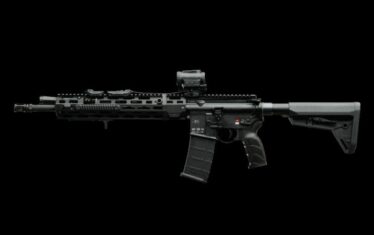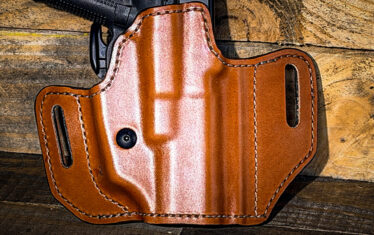The last time I went to my local shooting range, there were two pistols in my range bag. One was a 1911 with 50 rounds of ammunition. The other was a 1911 with 50 rounds of ammunition.
That’s not a typo. The first pistol was a $1,999 Springfield Armory 1911 TRP paired with $44.50 worth of Sellier & Ballot .45 ACP ammunition. The other was a $399 Hammerli Forge H1 with a whopping $6 worth of CCI .22 LR ammunition.
Both pistols look the same, share the same controls (save for the ambidextrous safety on the TRP), and fit in the same holster. They pose very different threats to my financial situation, though.
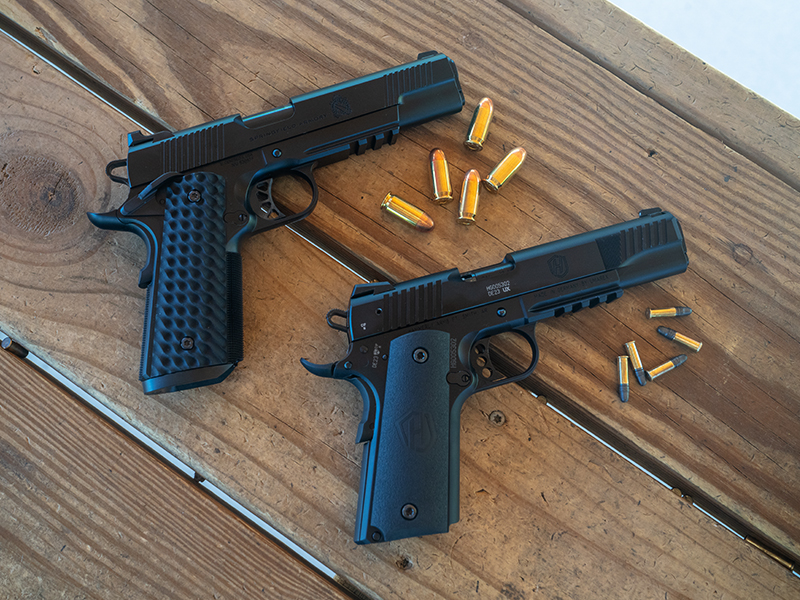
Shooting Well Isn’t Cheap
I’m a huge advocate for dry-fire training, but snapping in can only do so much. If you want to get (and stay) proficient with your pistol, you have to train with live ammunition — plain and simple.
You might get lucky and have access to a public shooting range or acreage of your own. Most of us have to pay for range time, though, either hourly or through an annual membership. That isn’t cheap.
Targets cost money, too. Steel plates are tons of fun but they’re expensive. I’ve saved a bunch of money by cutting my own silhouettes out of cardboard boxes, but I still buy paper targets and that adds up. So do staples, a stapler, and target stands.
Then there’s the issue of safety. Quality shooting glasses and hearing protection are worth investing in but they add a hefty line item to your bill.
Factor in gas to get to and from the range, and cost can be a significant barrier to training. If there were a way to cut that down, wouldn’t you want to give it a try?
Train More For Less
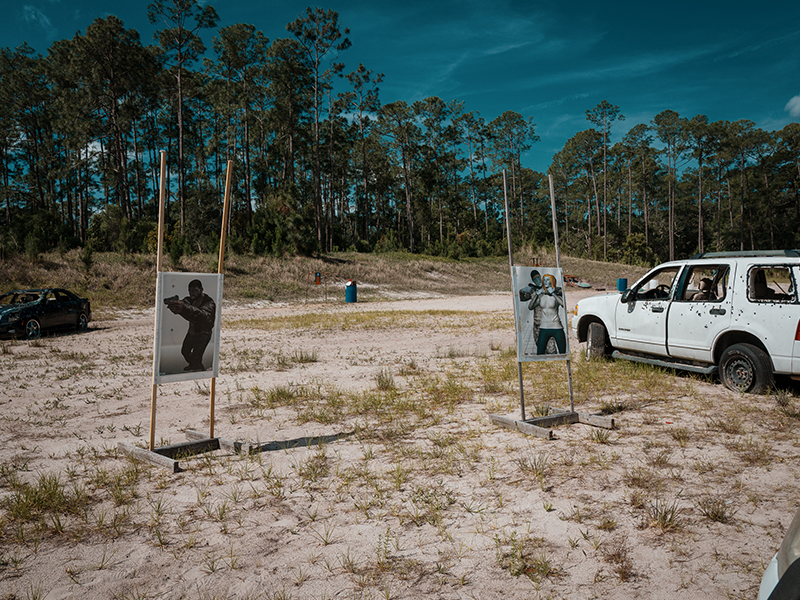
At the time of writing, I found ample .22 LR ammunition selling for four $0.04 per round. By contrast, the cheapest 9mm ammunition was about $0.15 per round and .45 ACP was $0.31 per round.
If you train with our favorite range drills, here’s what a single session could cost.
- Bill Drill: six rounds
- Dope Drill: five shots at five distances for a total of 25 rounds
- El Presidente: four shots on three targets for a total of 12 rounds
- Mozambique: three sets of three shots for a total of nine rounds
- 1-Reload-1: three sets of two shots for a total of six rounds
- Bill Drill: six rounds (compare this time to your cold time from the beginning)
This would make for a very efficient training session. It doesn’t take long but you can gain a lot of training value if you’re intentional about it. All in, you’d fire 64 times.
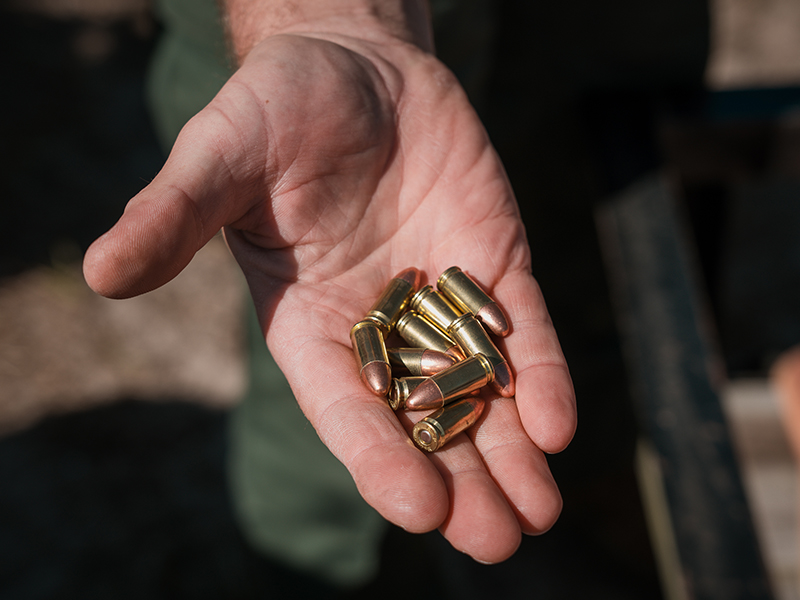
If you shoot the cheapest 9mm ammo I found, that example will set you back $9.60. Stepping up to .45 ACP would cost $19.84. Shooting humble .22 LR slashes that cost to $2.56.
To put it another way, switching from 9mm to .22 LR will get you three times the training reps for the same amount of money. Switching from .45 ACP to .22 LR will get you almost eight times the training reps for that dough.
These are not small numbers we’re talking about. How much better would you shoot if you trained three to eight times more?
The Hidden Benefit of Rimfire Training
Training with a rimfire pistol can save you lots of money but that’s not the only perk.
It may sound funny to list this as a benefit, but rimfire ammunition is notoriously dirty and inconsistent. That means your rimfire pistol is likely to malfunction far more often than your carry gun.
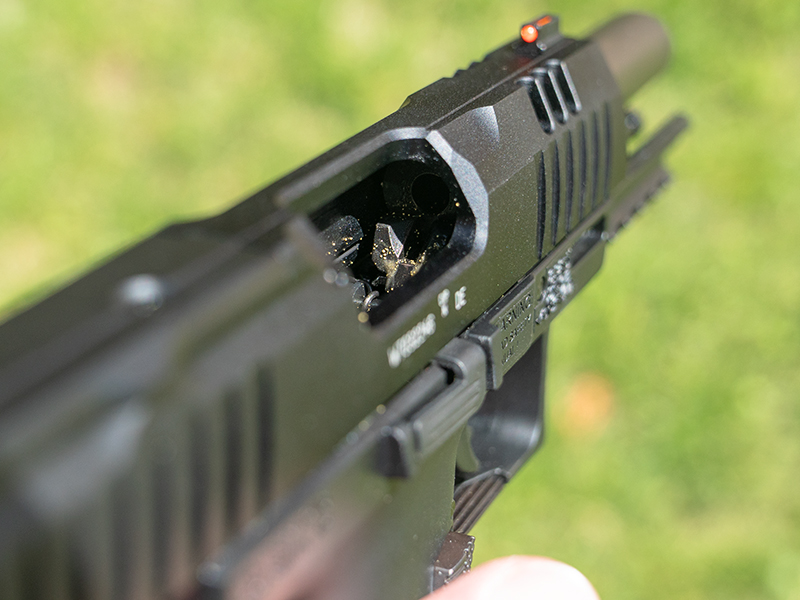
Consider this an opportunity. The shooting range is where we grow, so take advantage of the chance to practice remedial action. Fix failures to extract, eject, and feed. Learn how to recognize and correct malfunctions quickly and effectively with hands-on experience.
We’ve all heard, “Tap, rack, bang” but you’ll have the concept committed to muscle memory within a few trips to the range with a rimfire pistol – I promise you that.
Downfalls Of Rimfire Training
Training with a rimfire pistol can save you a ton of money but it isn’t a perfect plan. Don’t retire your 9mm or .45 ACP pistol just yet.

Why do we start new shooters on a .22? Easy, they don’t have to manage recoil.
The same trait that makes rimfire pistols great for beginners presents a drawback down the road. Without strong recoil impulses (one to the rear and one forward on semiautomatic handguns), we lose the opportunity to build good recoil management techniques. You can get away with a soft grip when you’re rattling off strings of 40-grain plinking ammo, but a more powerful pistol will expose your weak points in a hurry.
Speaking of larger caliber pistols, training with a rimfire pistol will inevitably take time away from your concealed carry or home defense pistol. It’s a simple opportunity cost; you only have so much time, so the more you train with one, the less you’ll train with the other. The key is striking a balance.
The Bottom Line
So, is rimfire training a sound practice? Absolutely. It can make you a better shooter. It’s a great way to welcome newcomers into the fold. Ammo is dirt cheap, and it’s a great excuse to buy another pistol.
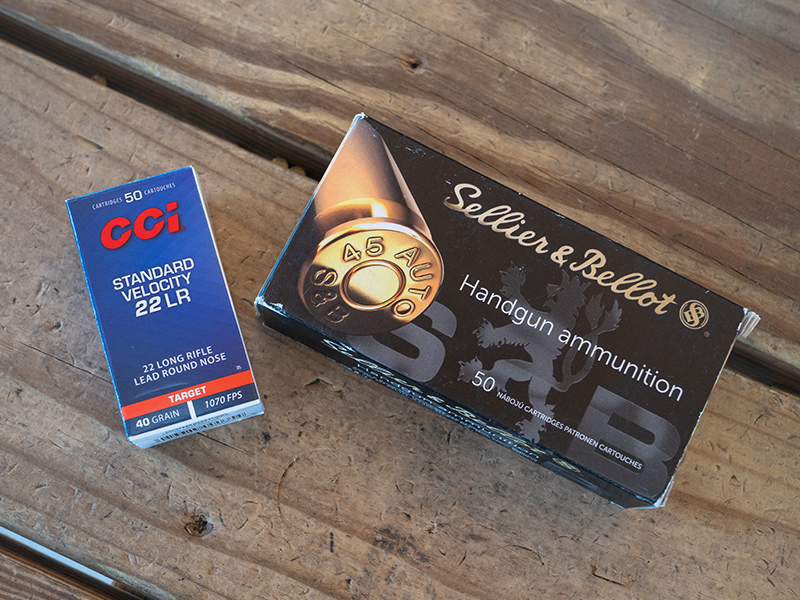
If you happen to choose a rimfire pistol that’s similar to something else you own, you can run the same holster, weapon light, and duty belt to gain transferrable experience. I ran a .45 ACP Springfield Armory 1911 TRP and a .22 LR 1911 Hammerli Forge H1 with the same Safariland 7TS ALS holster. Regardless of what was leaving the muzzle, that’s more reps with the 1911 platform and Level I retention.
Besides, rimfire training is just plain fun. And that’s a good reason, too.





